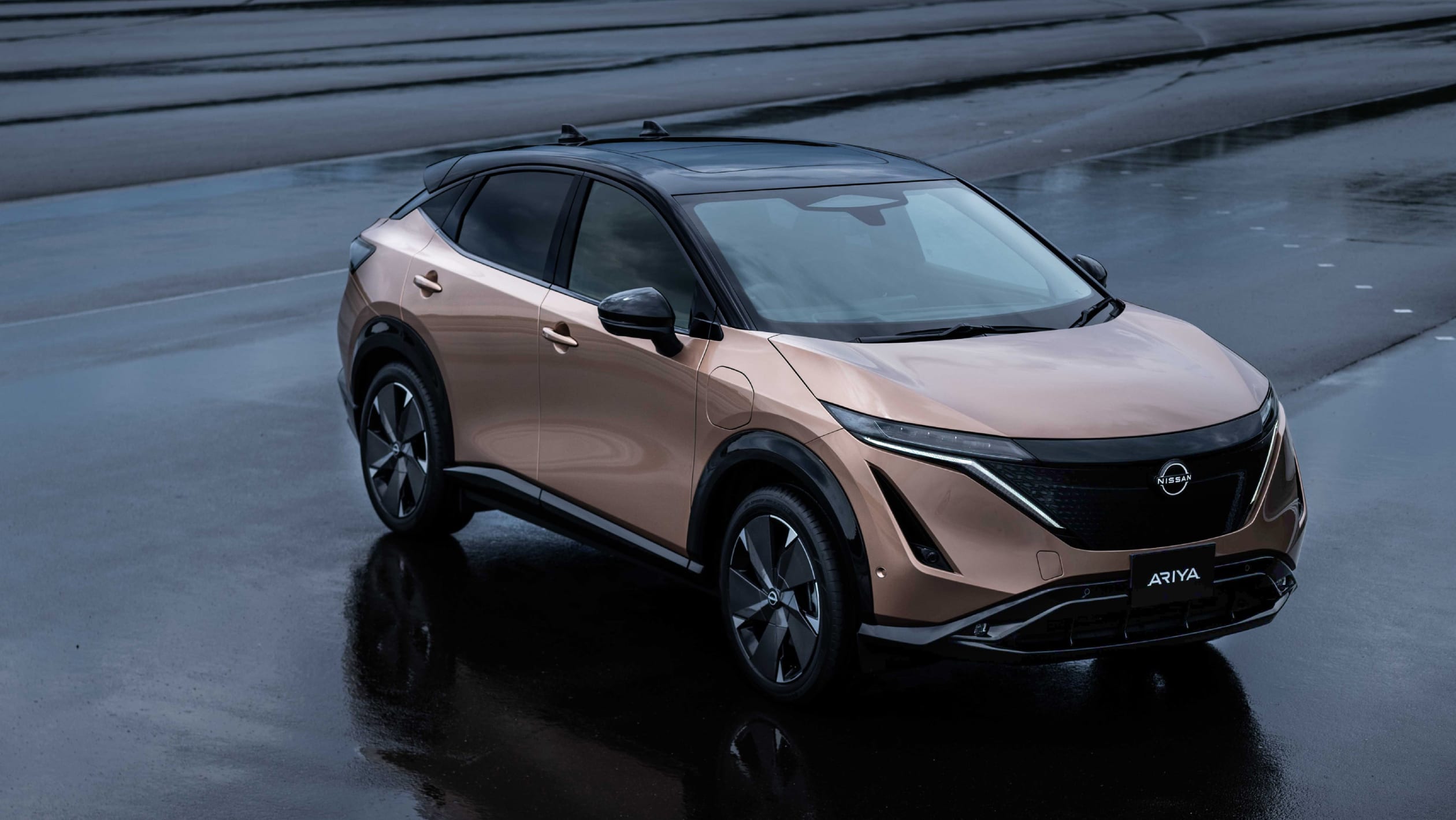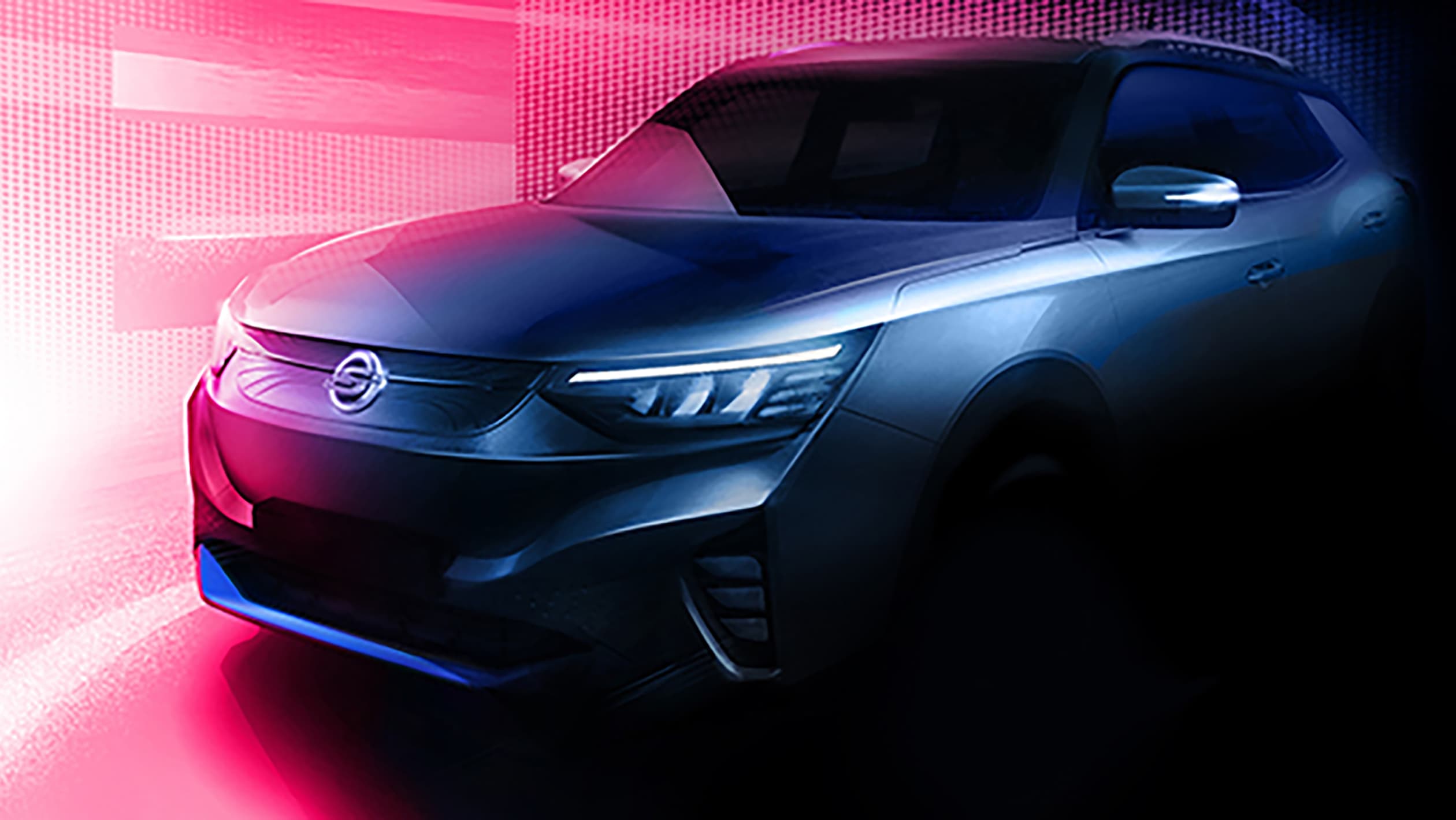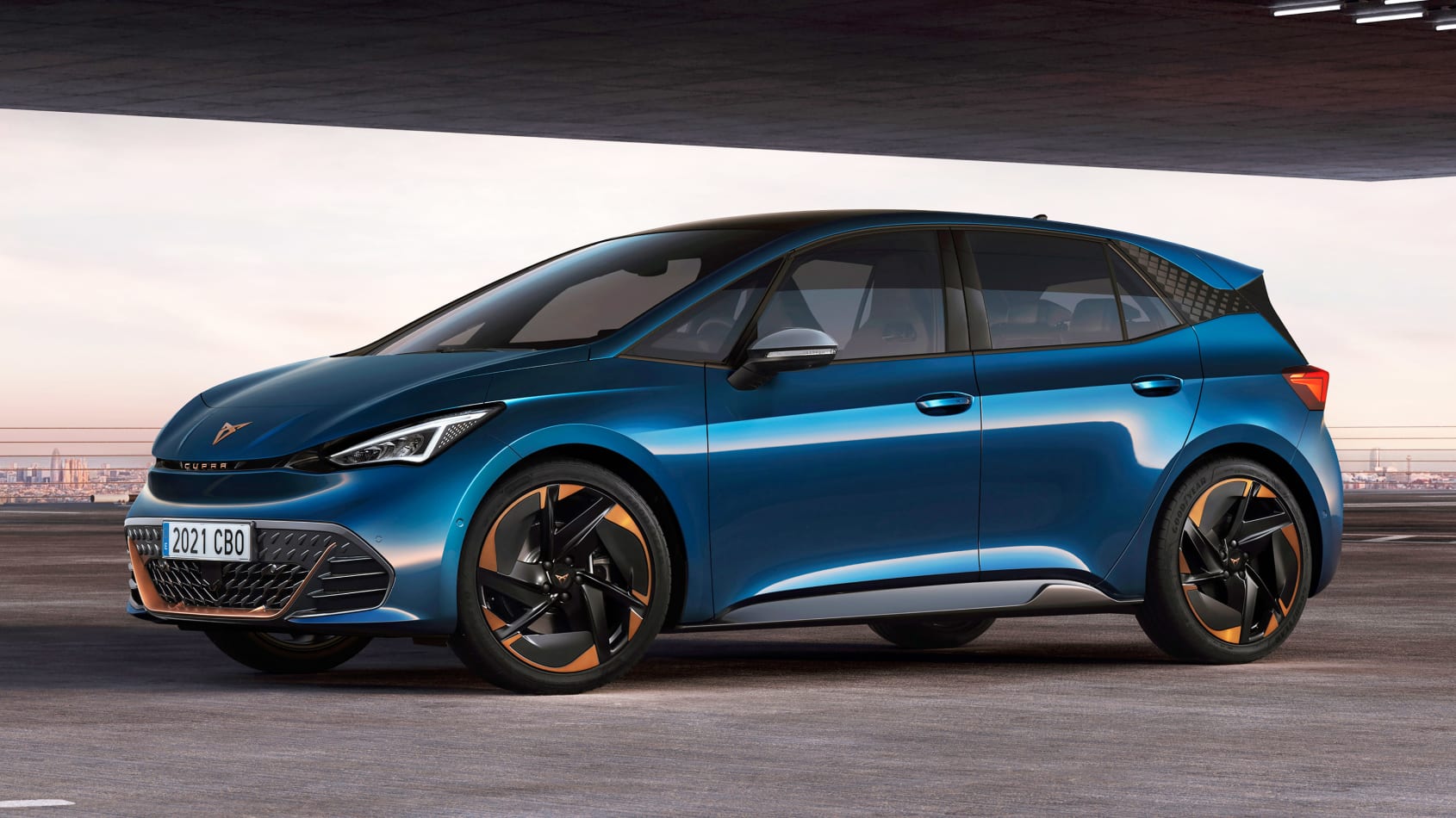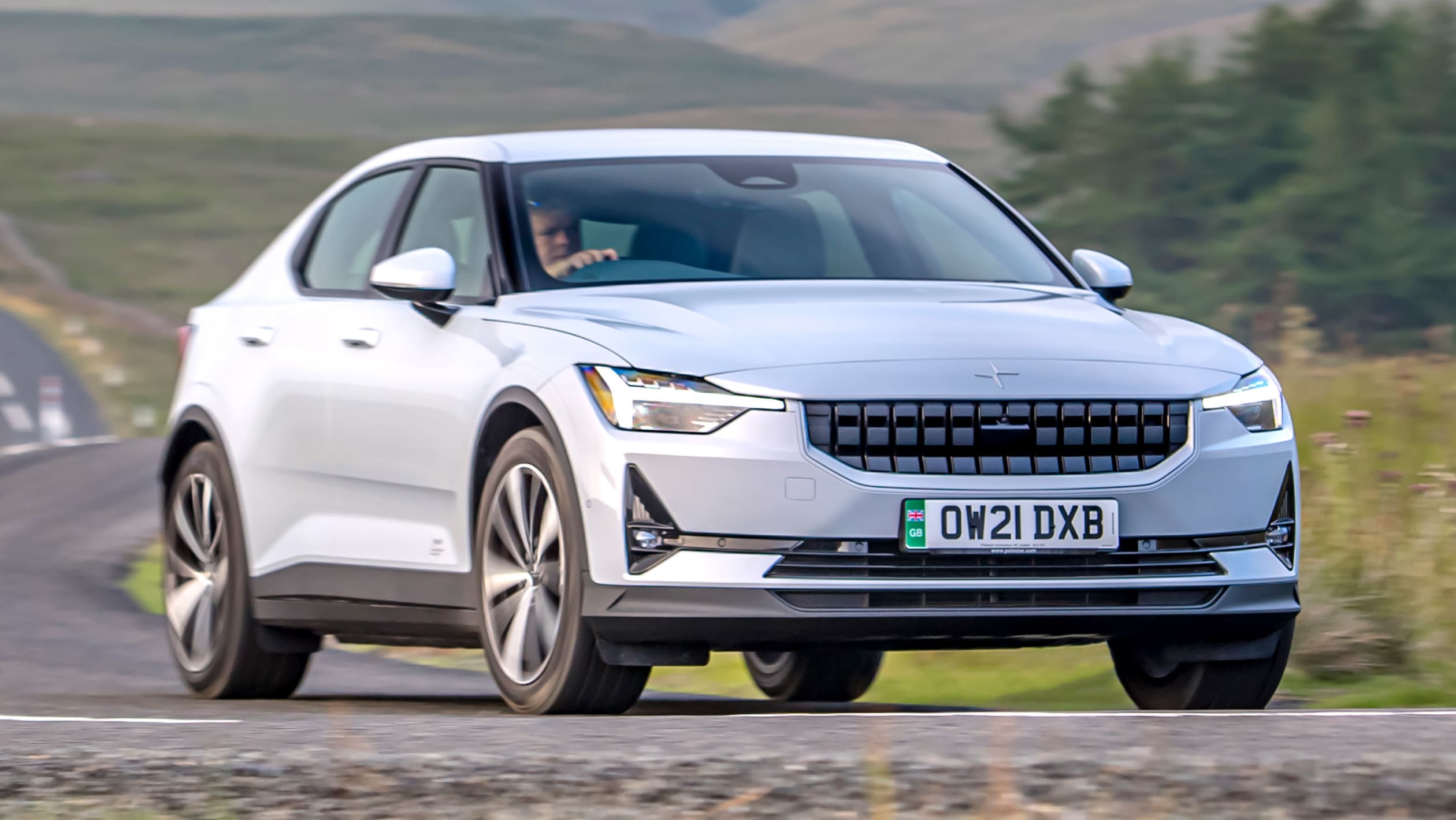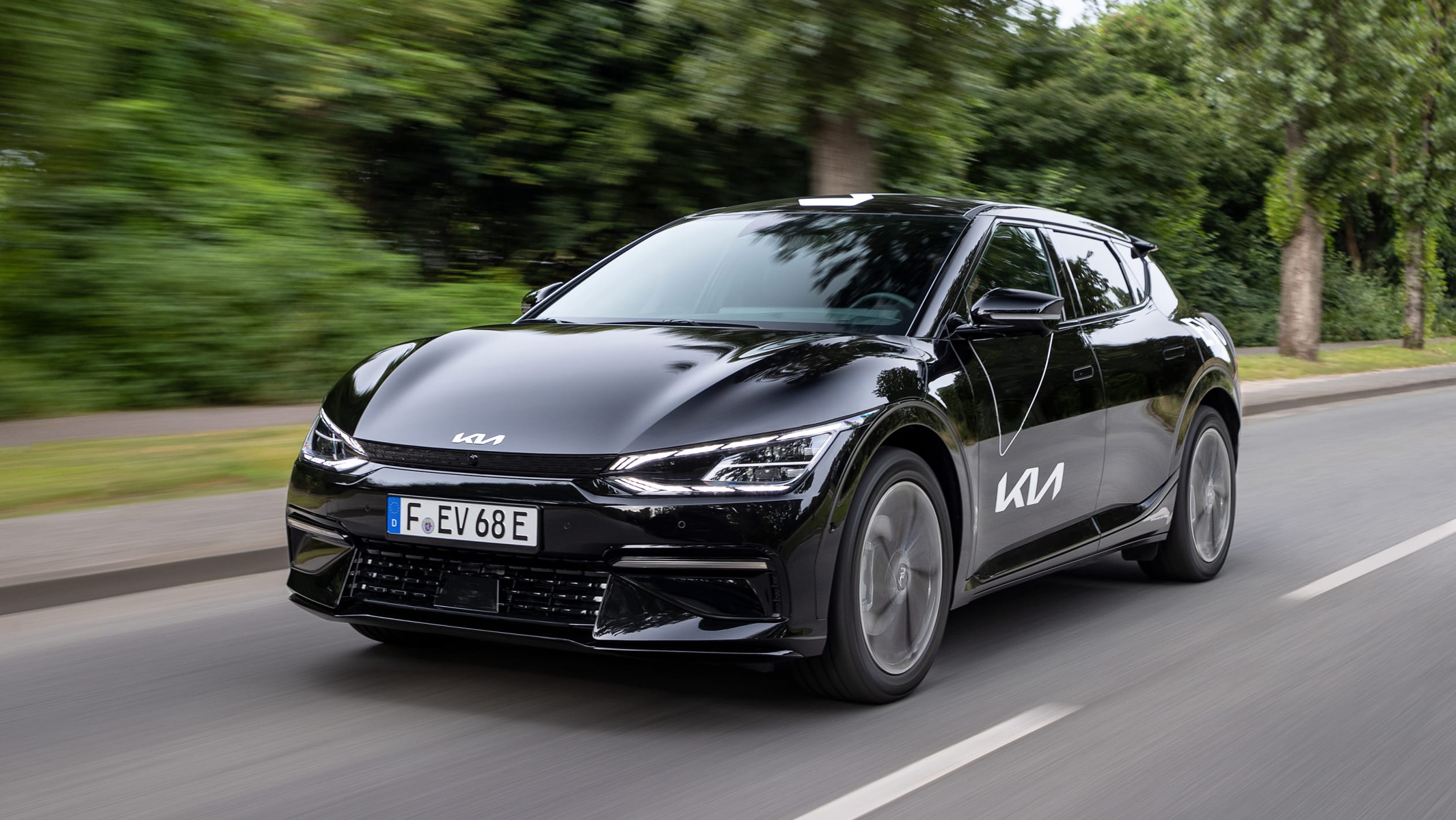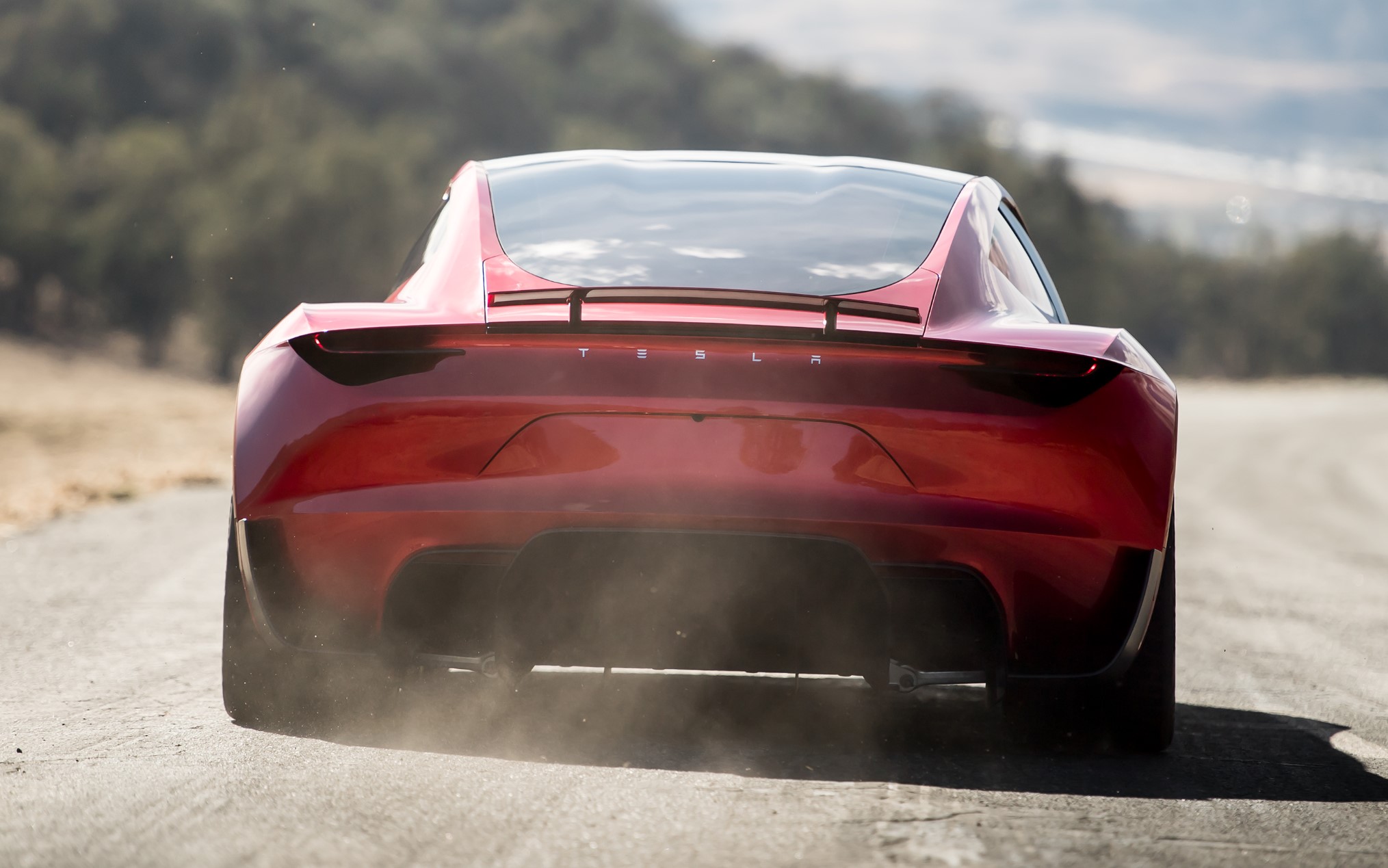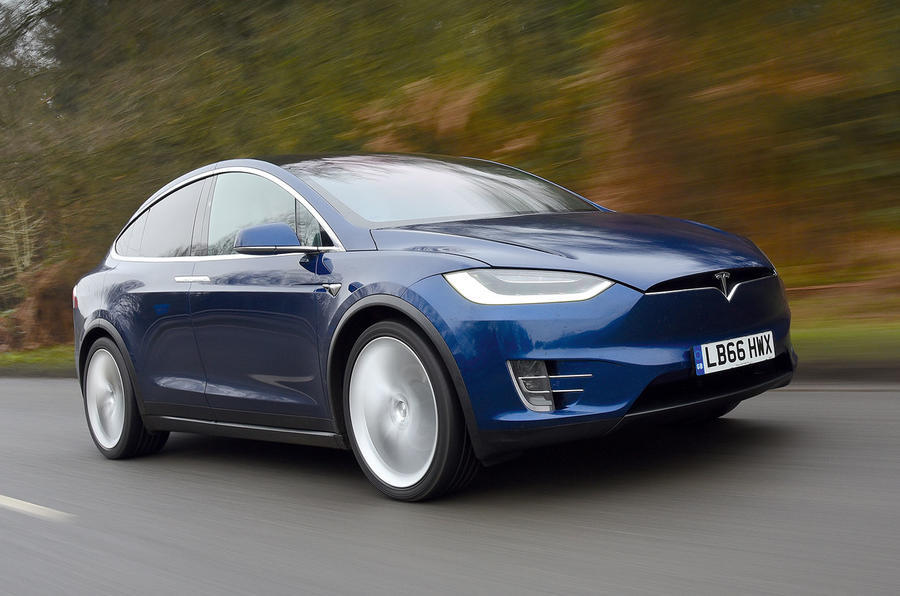Every important new electric car model due to be revealed or launched this year, all in one place.
Keeping track of new cars and knowing when they’ll be unveiled and when they are due to go on sale can be tough, especially if you’re only interested in electric cars. Here’s our comprehensive list of what key EVs are either coming for buyers or being revealed for the rest of this year.
Updated: September 14 2021
BMW iX3
An electric version of BMW’s X3 SUV, the iX3 made its debut in mid-2020 with a new rear-wheel-drive powertrain comprising a single electric motor. It closely resembles the petrol-powered X3, rather than taking any design inspiration from the more radical i3 or i8, and is only the company’s second pure-electric car.
You can read our BMW iX3 first drive review here.
The motor develops 210kW, has an 80kWh battery and is capable of delivering almost 460km of WLTP-certified range. BMW Australia expects the new model to launch locally in November 2021.
Nissan Ariya
The Leaf may have helped Nissan get an early lead in the electric car class, but it is hoping the Ariya will have an even bigger impact. Set to go on sale in the latter half of 2021 as a rival to the Tesla Model Y and Volkswagen ID 4, the SUV will make its debut with up to 500km of range.
There is single-motor, front-wheel-drive, and twin-motor four-wheel-drive powertrains offered, as well as a choice of 63kWh and 87kWh batteries. A range-topping e-4orce Performance model will produce 290kW and cover 0-100km/h in 5.1sec. Nissan Australia says it does not yet have local timing.
Audi E-Tron GT
Audi’s electric sports car comes in two models: the e-tron GT quattro and RS e-tron GT. Both versions use an electric powertrain featuring a motor mounted on each axle for four-wheel drive.
You can read our Audi e-tron GT review here.
The entry-level E-Tron GT car produces 350kW and 630Nm of torque, which Audi says is enough for a 0-100km/h time of 4.1 seconds and a top speed of 245km/h. The performance-focused RS e-tron GT has a power output of 440kW and 830Nm – although the car’s launch control system can temporarily increase power to 475kW. This version’s 0-100km/h time drops to just 3.3 seconds, while its top speed increases to an electronically limited 250km/h.
Volvo XC40 Recharge
Volvo’s first all-electric vehicle, the new XC40 Recharge Pure Electric SUV, is heading to Australia later this year at $76,990 plus on-road costs.
You can read our Volvo XC40 Recharge review here.
The model will be available in one specification, including twin 150 kW electric motors on the front and rear axles for all-wheel drive and a total combined output of 300kW and 660Nm. The claimed 0-100kph time is 4.9 seconds.
Driving range is 418km thanks to a 78kWh lithium-ion battery pack under the floor. Recharging times via DC fast charging will take the battery from zero to 80 per cent charge in around 40 minutes.
Ssangyong Korando
The Koreon firm will introduce an electric Korando to the world later this year, marking the brand’s first EV. It comes as the brand focuses on its business rehabilitation effrots, as it searches for new investment having struggled financially over the last few years. No word on an Australian arrival yet.
BMW i4
Based on the 4 Series Gran Coupe, which is also due this year, the electric BMW sedan will rival the Tesla Model 3 with 600km of range from an 80kWh battery and 390kW electric motor – giving it more power than the upcoming M4. BMW is accelerating its electric vehicle plans, and so production of the i4 has been brought forward to later of this year.
You can read our BMW i4 Prototype review here.
Technology will be a major focus of the car, with BMW’s eighth-generation iDrive operating system enabling over-the-air updates.
Cupra Born
The second non-VW model to launch on the MEB platform, the Born has a very similar powertrain and engineering to the ID hatchback, but opts for sportier styling and a more engaging driving experience. Set to launch at the end of 2021 it will be Volkswagen Australia Group’s first all-electric model to market.
The Born will be powered by a 77kWh (82kWh gross) battery pack and promises 600km of range per charge. Customers will be able to choose from four lithium-ion battery pack and motor combinations. A 45kWh, 112kW model with up to 340km of range marks the entry point, with a 58kWh, 152kW model positioned just above returning 410km of range.
As with the ID 3, a 77kWh battery is specified on top- rung variants, offering an official range of 540km. The most powerful versions use a 172kW motor that sends the hatchback from rest to 100km/h in 6.6sec. Cupra claims the largest battery can gain 100km of range in seven minutes using a 125kW charger, while a 5-80 per cent charge from a 125kW fast charger takes 35 minutes.
BMW iX
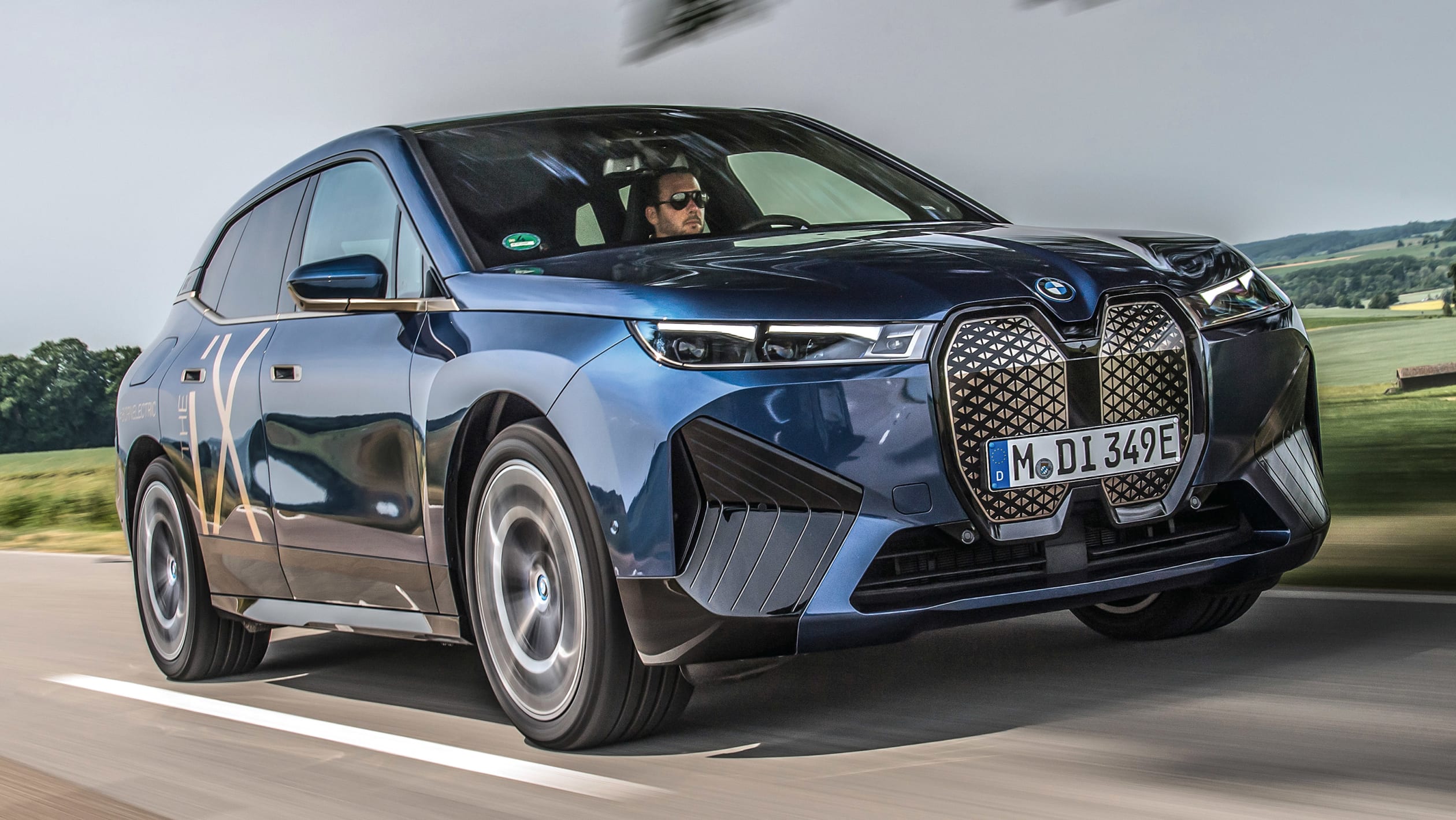
BMW’s upcoming flagship is expected to arrive in late 2021 and promising two powertrains. The family SUV caused plenty of controversy at launch with its radical styling, but it appears the German EV will have the performance to back up those powerful looks.
You can read our BMW iX Prototype review here.
BMW has optimised range by increasing the energy density of the batteries, rather than the size of the units themselves, to reduce weight. The xDrive40 is capable of charging at speeds of up to 150kW, which, BMW claims, is fast enough to gain more almost 100km of charge in as little as 10 minutes, whereas the xDrive50 has 200kW charging capability for 120km in 10 minutes. Both cars, the company claims, can be charged from 10 to 80 per cent capacity in less than 40 minutes and use less than 21kWh of electricity per 100km travelled, on average.
Over the course of 125,000 miles, BMW claims, the iX xDrive40 has a 45 per cent-lower global warming potential than that of a comparable diesel car.
Polestar 2
Polestar’s second all-new model, the aptly named Polestar 2, is an all-electric, compact executive-sized mainstream model from the Swedish performance off-shoot of Volvo.
You can read our Polestar 2 review here.
Polestar wants the 2 not only to rival the Tesla Model 3, but also to set the cat among the current compact executive class pigeons. The Polestar 2 is powered by two electric motors fed from a 78kWh lithium-ion battery pack that helps achieve the projected 500km range figure. Power stands at 300kW, with a chunky 660Nm available right from the off, as per most electric motors.
Kia EV6
Kia is set to launch 11 new electric vehicles by 2025, and the EV6 crossover is the first bespoke EV the South Korean company has ever made. The EV6 will be a sister car to Hyundai’s Ioniq 5. It sits atop an all-new platform and initially offering around 600km of electric range from a 72.6kWh battery, and the company is reportedly aiming for 800km later down the line, while high-speed 800V charging should provide a full battery in under 20 minutes.
You can read our Kia EV6 review here.
Entry-level models offer 168kW, with 19-inch alloy wheels, heated mirrors, LED lights all round, vegan leather seats and a raft of advanced driver aids, whereas the toop-of-the range GT-Line S comes with all-wheel-drive, larger 20-inch wheels, ventilated front seats, an electronic boot lid and panoramic sunroof.
Mercedes-Benz EQB
Set to rival the Audi Q4 E-tron, the EQB is based on the GLB. Full details are yet to be revealed, but Mercedes-Benz Australia has confirmed that the model will be coming to Australia.
A top-spec 350 4Matic utilises two electric motors with a combined output of 215kW. Other models set to be added to the line-up include the front-wheel-drive EQB 250, which runs a front-mounted motor with 140kW, and the four-wheel-drive EQB 300 4Matic, which uses the same dual motor set-up as the EQB 350 but with around 180kW. However, the EQB isn’t expected to reach Australian showrooms until 2022.
Power for the EQB 350’s electric motors is provided by a 66kWh lithium ion battery which can be charged at up to 11kW on an AC system and at up to 100kW on a DC set-up. Final performance figures are not yet confirmed, but officials have told us the initial four-wheel-drive EQB model will have a 0-100km/h time of around 6.0sec.
Mercedes-Benz EQS
The S-Class of electric cars, as Mercedes-Benz is pitching it, it promises to be a tech-laden limousine capable of keeping pace with the Porsche Taycan when it does. Production takes place alongside the S-Class at the company’s Sindelfingen factory in Germany. As such, it should come as no surprise that the EQS will feature the same 11.9-inch touchscreen and 12.3-inch digital instrument display as the S-Class.
You can read our Mercedes-Benz EQS review here.
An AMG performance version is also expected to arrive the following year with as much as 450kW. A range of 700km is also being targeted, putting it on collision course with the Tesla Model S as well as the Taycan.
Tesla Model S Plaid
Long promised by Tesla boss Elon Musk, the Model S Plaid will challenge Porsche’s Taycan Turbo S for the electric performance sedan crown. It will use three motors to produce around 820kW and is capable of 0-100km/h in less than 2.0sec. Top speed is expected to be 320km/h, with Tesla claiming it will be the most powerful and quickest-accelerating production car in the world.
The Plaid (named as a nod to Mel Brooks’ comedy classic Spaceballs) will also gain a larger battery, allowing for as much as 840km of driving range on a single charge.
Tesla Model Y
Deliveries of Tesla’s compact SUV began in North America in mid-2020, but it isn’t expected to arrive in the UK until the tail end of 2021 at the earliest. The much-in-demand SUV will arrive with the option to add a third row – which could make it the go-to EV for large families. It shares a platform and powertrain with the Model 3 sedan, which will hopefully speed up Tesla’s ability to deliver cars on time.
You can read our Tesla Model Y Review here.
A more advanced version of the company’s ‘supercomputer’ semi-autonomous driving system is also predicted, as is a more potent Performance variant. Long Range versions of the car are purported to hit 510km on the EPA test cycle, although it may fall slightly short of this figure when run under WLTP regulations.
GMC Hummer EV
Set to go into production in the final months of 2021, with customer deliveries to follow next year, GMC’s bold electric pick-up truck is set to resurrect the Hummer brand in the US. Although it’s unlikely to make its way to Australia in any official capacity, the extreme EV looks set to make a big impact on home soil, with an estimated 735kW and 15592Nm of torque, a 0-100km/h time of around three seconds and up to 560km of range on a full charge.
Hyundai Ioniq 5
The first car to fall under Hyundai’s new Ioniq sub-brand, the Ioniq 5 will make its on-road debut towards the end of the year.
You can read our Ioniq 5 review here.
It will be the company’s first bespoke EV (the Kona Electric shared its platform with the hybrid and petrol-engined versions), and sticks closely to the radical 45 Concept, which was revealed to the public at the 2019 Frankfurt motor show. That makes it a big departure from the company’s current model range.
Hyundai Ioniq 6
Likely to debut this year, but not appear in showrooms until mid-2022, the Ioniq 6 will be Hyundai’s flagship EV, a sedan that will share design elements with the Ioniq 5 but be radically different from the brand’s current model line-up. A high performance variant is likely, with the E-GMP platform it will be based on able to use dual motors for a 0-100km/h sprint time of less than 3.5sec. Range will vary depending on specification, but up to 500km should be possible between charges.
MG E-Motion
A two-door, four-seat electric sports car will bring MG’s history with sports cars into the modern era. Though a name has yet to be confirmed, it is expected to be heavily based on the E-Motion concept shown at the 2017 Shanghai motor show, albeit with significantly modified styling. Parent company SAIC’s twin-motor, four-wheel drive powertrain should give it a 0-100km/h time of less than four seconds.
Lotus Evija
Although it was hoped that production could begin in time for the first deliveries to be completed in 2020, the Lotus Evija has now been pushed back until the middle of 2021. Even so, the Evija has already sold out its first year allocation, despite costing almost $4 million each.
You can read our Lotus Evija Prototype review here.
While Lotus has yet to confirm performance details, it is reportedly targeting a 0-100km/h time of under three seconds, a top speed of over 320km/h, and a 0-300km/h sprint of less than nine seconds. Multiple electric motors will deliver all-wheel drive and a peak 1471kW output, making it more powerful than both the Bugatti Chiron and Pininfarina Battista. We’ve already driven the prototype, and it showed its hugely impressive performance. Lotus Australia says it has had three expressions of interest with only 130 to be built worldwide.
Tesla Roadster
A flagship sports car to replace the original, Lotus-based Roadster that announced Tesla to the world, the next-generation Roadster has been previewed extensively ahead of an official debut.
Tesla claims a top speed in excess of 400km/h, a 0-100km/h time of 1.9sec and a range of almost 1000km thanks to a 200kWh battery pack – the biggest in a production EV. Prices for the base Roadster in the US start at $200,000 (AUD$300,000). Australian customers being asked to place a $7000 deposit with $59,000 due ten days after.
Tesla Model X Plaid
Improvements made for the Model S Plaid have also made their way into Tesla’s family SUV. Adding an extra motor to the Model X allows it to hit 0-100km/h in 2.5sec, shaving two tenths of the time it could already achieve before the changes were introduced. Deliveries are expected to commence in the US soon, but it could be a while before the Model X Plaid finds its way to Australia.






